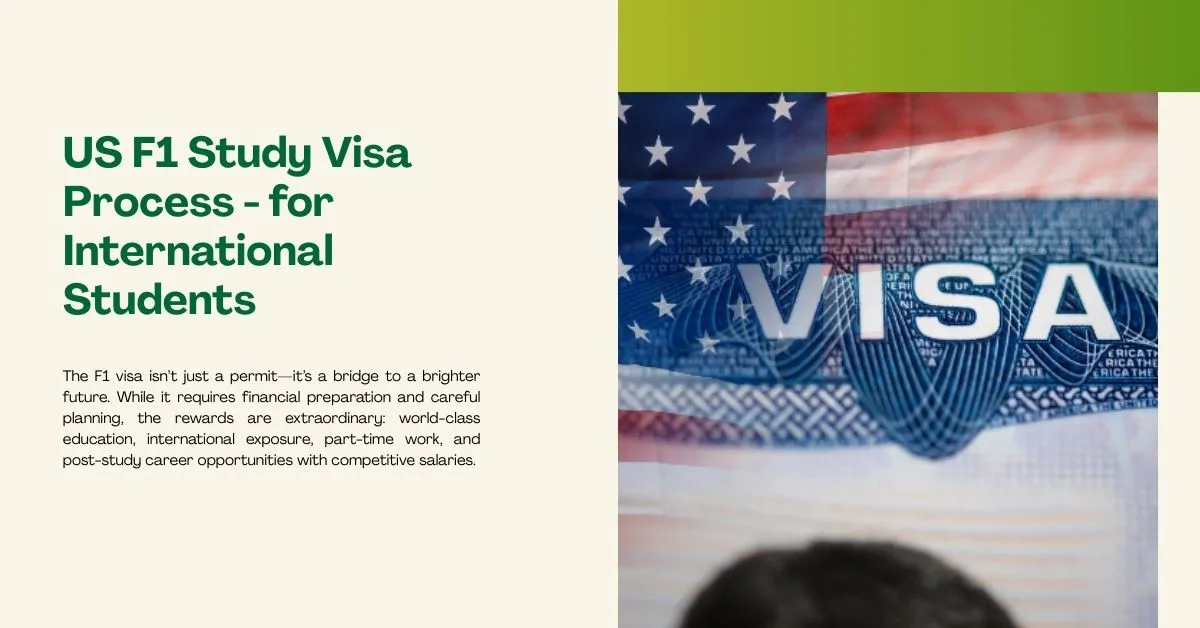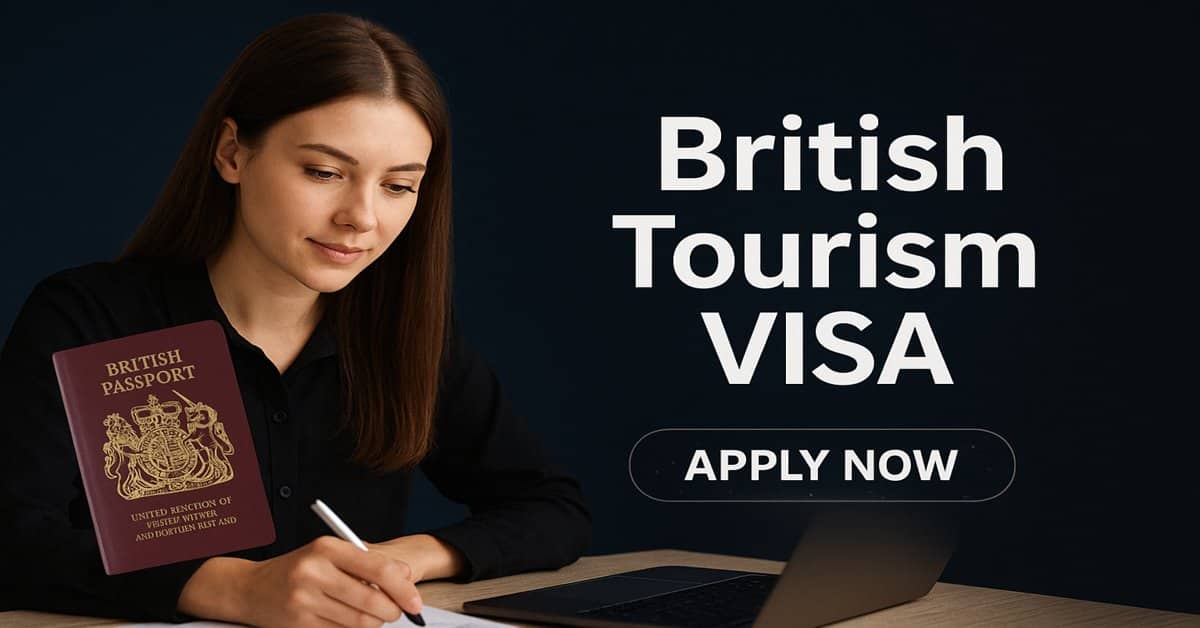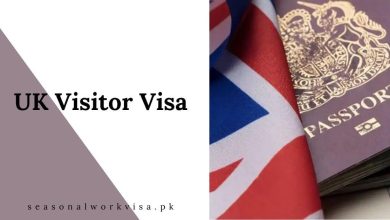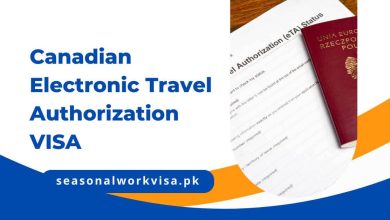US F1 Study Visa Process 2025 – for International Students

The prospect of studying in the United States home to world-renowned universities, cutting-edge research, and a vibrant cultural tapestry is a dream for millions. Turning this dream into reality begins with a crucial key: the F1 Student Visa. The process may seem complex, but with the right guidance, it is an achievable milestone on your path to academic and professional success.
This comprehensive guide is designed to demystify the US F1 Study Visa Process for 2025. We will walk you through every critical step, from securing acceptance at a SEVP-approved school to acing your visa interview. You’ll learn about the essential eligibility criteria, including the proof of financial support required to demonstrate you can cover tuition and living expenses.
We’ll also explain important post-arrival requirements like maintaining full-time enrollment and how to take advantage of work opportunities such as Optional Practical Training (OPT). If you’re ready to embark on your educational adventure in the USA, let this be your roadmap.
What is an F1 Visa?
The F1 visa is a non-immigrant visa specifically for international students pursuing academic studies in the United States. Its key features include:
- Full-Time Enrollment: Mandatory enrollment in a full-time course load at an accredited institution.
- Work Limitations: Permits on-campus work for up to 20 hours per week during sessions.
- Duration: Valid for the length of your academic program plus a 60-day grace period to depart the country.
Read Also: USA Visitor Visa – Requirements & Application Process
Eligibility Criteria for the F1 Visa
To qualify, you must meet these requirements:
- SEVP-Approved School: You must have a valid Form I-20 from a Student and Exchange Visitor Program (SEVP)-approved institution.
- Financial Proof: Demonstrate sufficient funds to cover your first year of tuition, fees, and living expenses.
- English Proficiency: Meet the English language requirement of your chosen institution (e.g., via TOEFL/IELTS scores).
- Intent to Return: Prove strong ties to your home country (family, assets, future job prospects) to show you intend to return after your studies.
Step-by-Step F1 Visa Application Process
Step 1: Get Accepted and Receive Form I-20
Apply and gain admission to a SEVP-approved U.S. college or university. They will issue you the Form I-20, which is essential for your visa application.
Step 2: Pay the SEVIS I-901 Fee
Pay the mandatory SEVIS fee online and keep the receipt for your records and visa interview.
Step 3: Complete the Online DS-160 Form
Accurately fill out the Nonimmigrant Visa Application (DS-160) online, upload a compliant photo, and print the confirmation page.
Step 4: Schedule Your Visa Interview
Pay the visa application fee and schedule an appointment for an interview at the nearest U.S. Embassy or Consulate in your home country.
Step 5: Prepare for the Interview
Gather all required documents:
- Passport valid for at least six months beyond your intended stay.
- Form I-20.
- DS-160 confirmation page.
- SEVIS fee receipt.
- Visa application fee receipt.
- Recent passport-sized photo.
- Financial evidence (bank statements, scholarship letters).
- Academic transcripts and standardized test scores.
Step 6: Attend the Visa Interview
The consular officer will assess your genuine intent as a student. Be prepared to clearly and confidently explain your study plans, financial situation, and ties to your home country.
Step 7: Visa Approval and Travel to the U.S.
If approved, your passport with the visa stamp will be returned to you. You may enter the U.S. no earlier than 30 days before your program start date.
Post-Arrival Requirements in the U.S.
- Report to Your DSO: Check in with your school’s Designated School Official (DSO) upon arrival.
- Maintain Full-Time Enrollment: You must be a full-time student each semester.
- Understand Work Authorization:
- On-Campus Work: Up to 20 hours/week during sessions.
- CPT (Curricular Practical Training): Off-campus work integral to your curriculum.
- OPT (Optional Practical Training): Work in your field of study for up to 12 months after degree completion (24-month extension for STEM fields).
Tips for a Successful F1 Visa Application
- Start Early: Begin the process 6-12 months before your intended start date to account for delays.
- Be Accurate and Honest: Ensure all information in your forms and during the interview is consistent and truthful.
- Demonstrate Strong Ties: Clearly articulate your plans to return home after your studies.
- Practice the Interview: Prepare answers for common questions about your university choice, academic goals, and finances.
Conclusion
Securing an F1 visa is a systematic process that requires careful planning and preparation. By following this guide, you can navigate each step with confidence. This visa is more than just a permit to study; it’s your gateway to world-class education and invaluable international experience. Meticulous preparation today will pave the way for your academic success in the United States tomorrow.
Frequently Asked Questions
How much bank balance is required for an F1 visa?
There is no fixed amount, but you must prove you have sufficient funds to cover your first year of tuition and living expenses, as estimated on your Form I-20. This typically ranges from $30,000 to $70,000+, depending on the institution.
Can I work in USA on an F1 visa?
Yes, with restrictions. You can work on-campus for up to 20 hours per week. For off-campus work, you must obtain authorization through CPT (during your program) or OPT (after completing your program).



